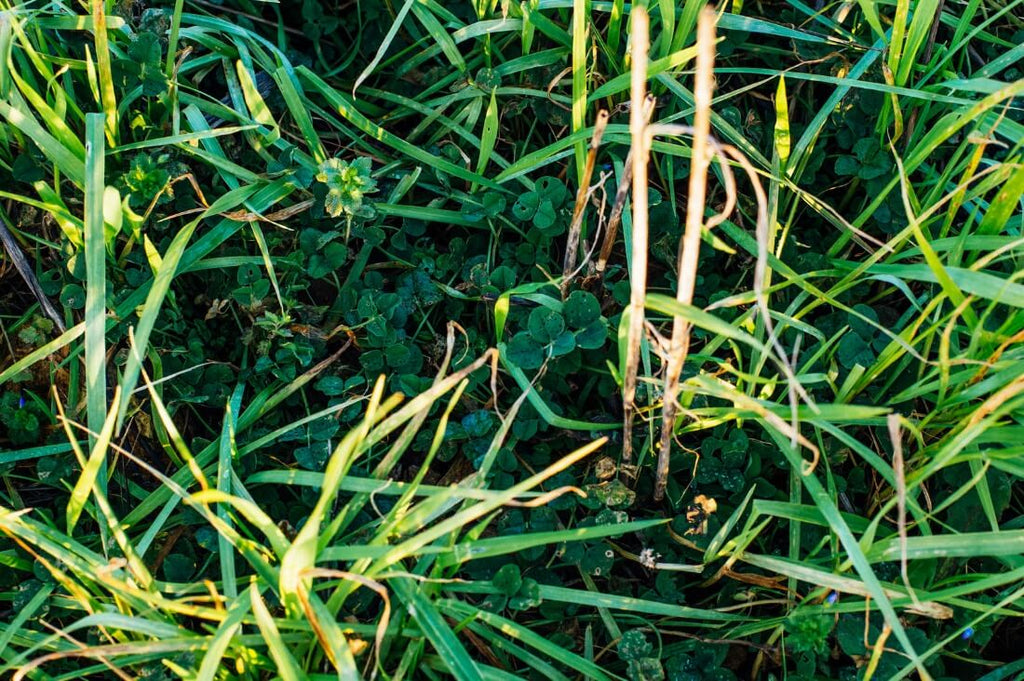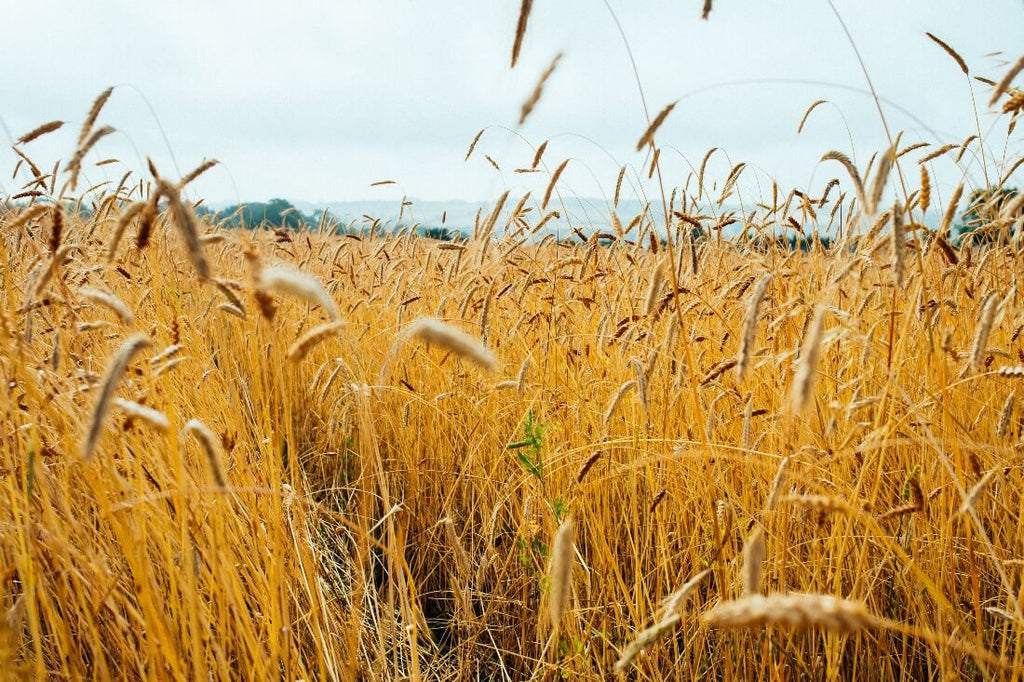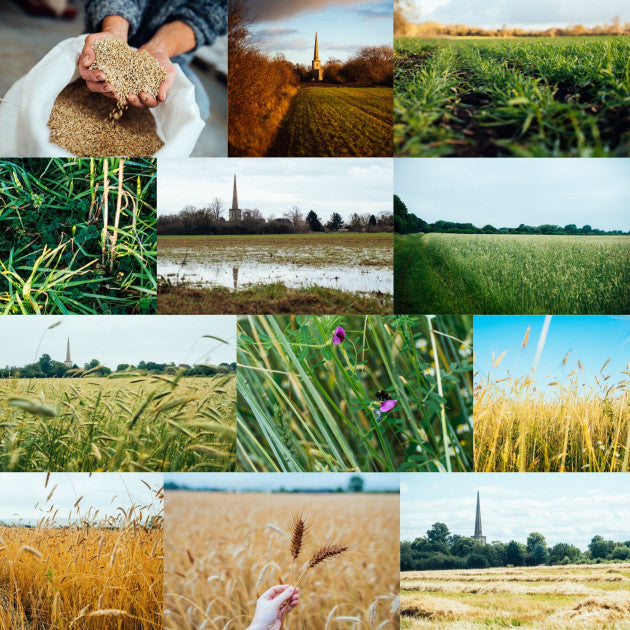January may seem like a quiet month, but our farm fields are busy preparing the raw materials for a fresh batch of spirits. Let’s walk through a year in the life of one field with Head of Farming, John Letts.
We grow sustainably, on farms within a 60-mile radius of our distillery, allowing the genetically diverse crops to adapt to their individual soil and climate conditions. Full genetic diversity means that the fields are potentially all slightly different, and we take what nature gives us from each individual field to convert to delicious spirits.
Being a farm-forward distillery means staying close to what’s happening at our farms, so the distillers can plan the flavour destinations of each crop.
So, what does a year in the life of a field of our beautiful grain look like, and what is really happening as it goes through the full growing cycle?
Here’s John on his favourite subject..

Time to meet the seed. This is ‘maslin’ - a mix of wheat and rye grown together in the field. This was common practice in the Medieval period, when most bread was made from it. Crops were never pure in the past. The poor ate rye and wheat when they could get it, and the rich ate rye. Rye has been grown in England since the Saxon period (just after the Romans left in the 5th century).

The yearly cycle starts in early Autumn, when we plant the seed... growing slowly through the cold winter days, but still gradually putting its roots down to collect nutrients and moisture.

Spring is coming, when crops ‘tiller’ (produce stems), so that one planted seed can produce many stems, and each stem produces an ear full of grain. 1 kg of seed planted will produce about 10 kg of grain nine months later at the harvest. And one square metre of grain will produce one loaf of bread.

Our farmers under sow clover in the fields. Clover adds nitrogen and organic matter to the soil and supports biodiversity above ground.

No crop can survive drowning. One major problem with modern farming is that the soil has been tilled repeatedly (ploughed, harrowed, weeded) to prepare it for planting and to kill weeds. It’s also sprayed with lots of chemicals that kill the soil. Tillage and fertiliser also cause a rapid breakdown of organic matter, which means the soil can’t drain well or retain much moisture. The natural soil structure is destroyed and crops drown in the winter. We hope our crops will gradually redress this balance.

The crop ‘greening up’ in the spring as the growing seasons gets rolling and nitrogen is released by decaying straw from the previous year’s harvest & clover.


Summer is on its way. As the days grow longer, plants accumulate sugar (from photosynthesis) in their stems, and as the days reach their zenith in June their flowering heads (ears) emerge from the stems ready to form seeds. Yield is determined by how many ears there are per m2.

An ear of a cereal contains flowers like any other flowering plant, but no brightly coloured petals or sweet perfumes. Wheat self-pollinates, and rye pollen blows from plant to plant in the wind. The seed then begins to form and accumulates protein and carbohydrate in the grain.

Our farmers don’t use any artificial agrichemicals on our fields, so insects pollinate the weeds and clover we plant under the crop.

Gradually, the straw begins to dry out after having carried its precious load of grain for several months. The sugars in the grain turn into starch – which can be milled into flour or distilled into spirits.

Unlike modern fields of ‘monoculture’ varieties, every plant in our fields is a little different from its neighbour genetically; stems and ears differ a lot in size, colour and height. This diversity ensures our fields can deal with poor weather, and can also adapt to local growing conditions and climate change.

Late summer sees the fields coming to full fruition. Once the grain dries to about 15-16% moisture it can be harvested with a combine harvester. The straw is shredded and left on the field to decay and feed the next crop.

This is a stalk of wheat, but our fields are a mixture of varieties (strains) of whatever species (wheat, rye, barley) is being grown. Or we plant maslin, which itself is a mixture of two species: wheat and rye.


Sometimes we will have a go at a more traditional way of bringing in the harvest!

Late summer, the end of the growing year – notice the green weeds and clover that have grown beneath the crop now coming to life in the last summer sunshine. A new crop will be drilled directly into this field in the early autumn, and that’s the farming year complete.
Thanks for taking a stroll through a year in the life of a field in Kidlington with us. We are hoping that, with time, these special crops and farming practises can help regenerate the soil, and support wider diversity.
And... they taste fantastic when distilled into our sustainable English whisky!
